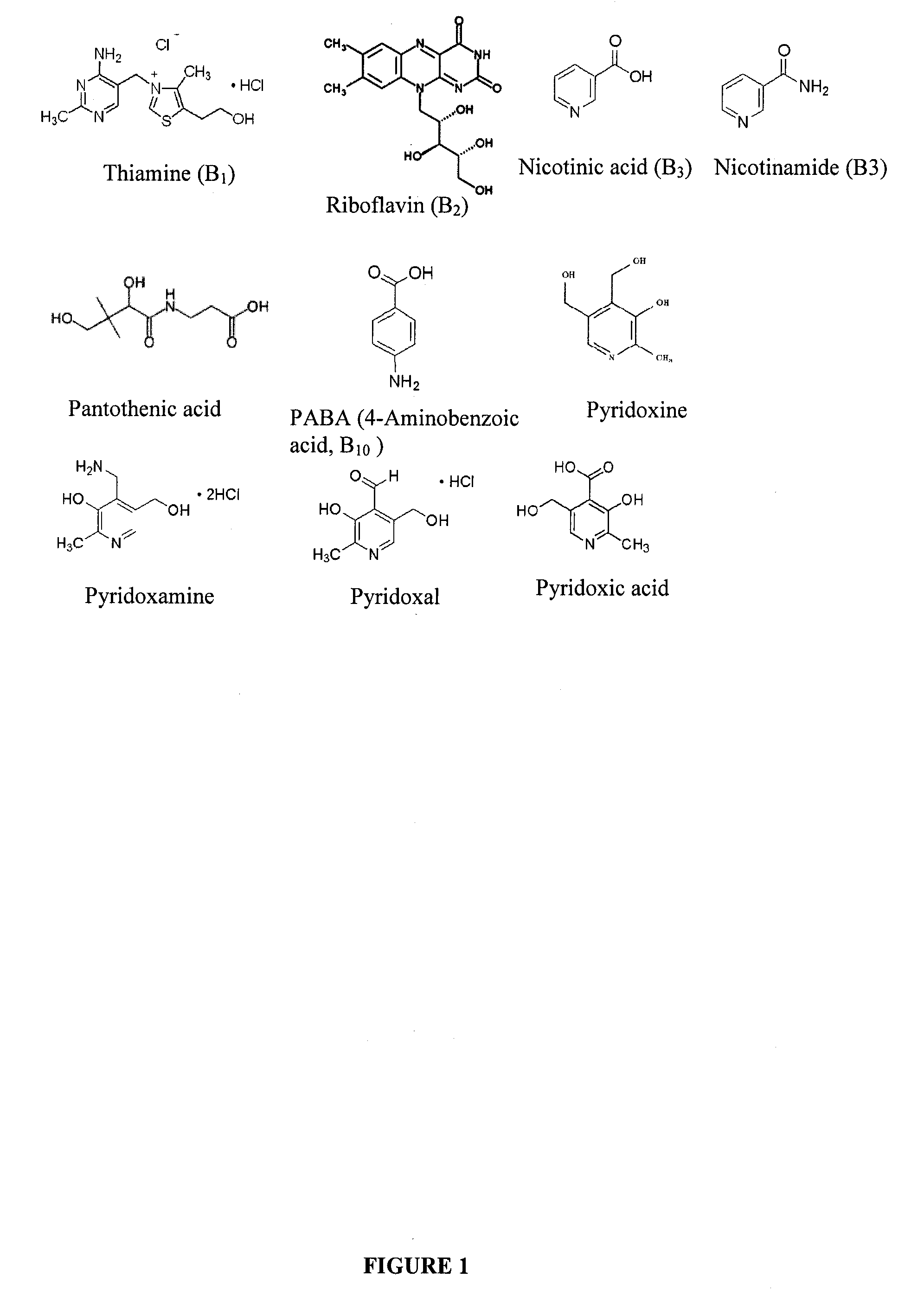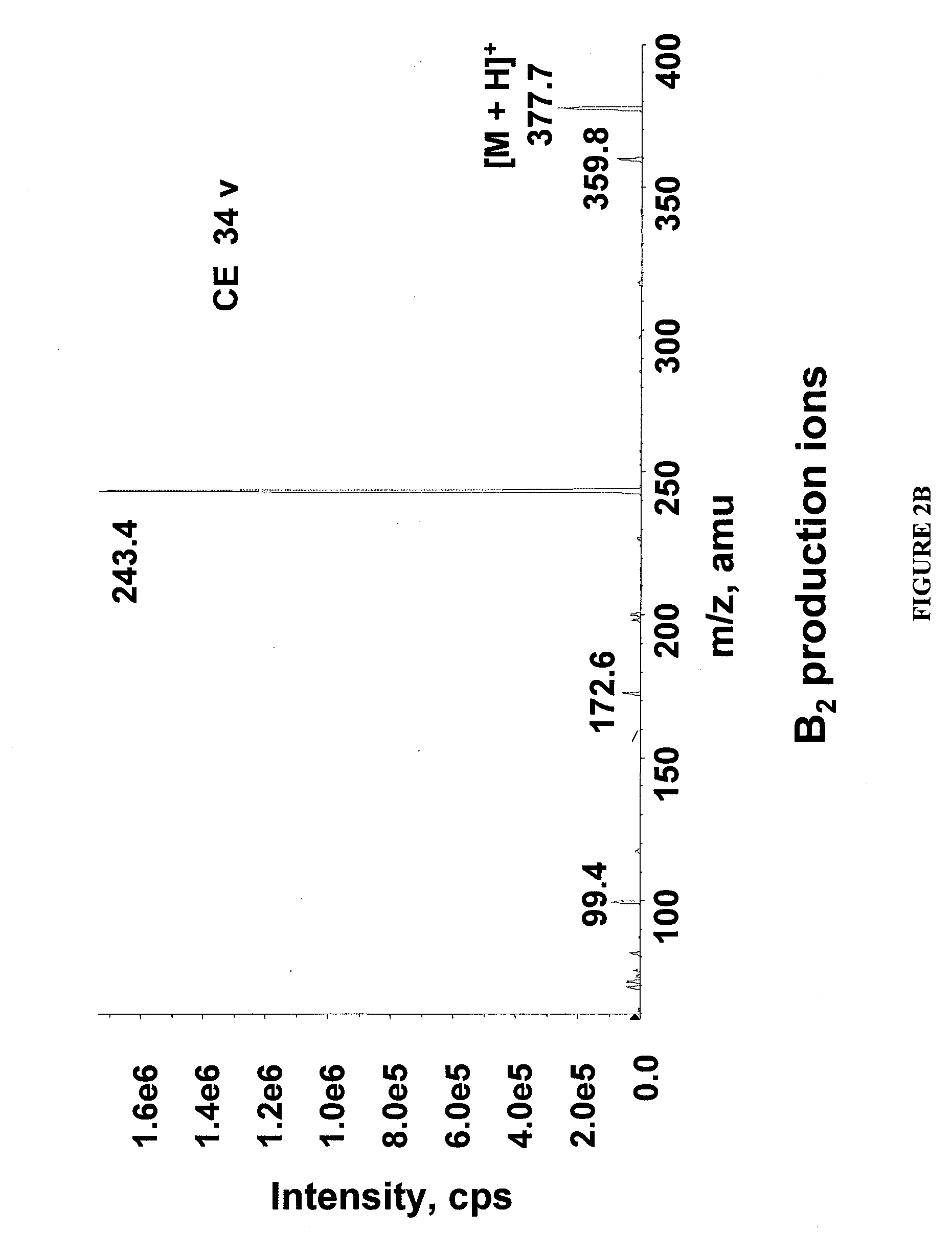Methods for analysis of vitamins
a technology of vitamin and method, applied in the field of nutritional analysis, can solve the problems of difficult to be sure of all these factors, serious health problems, and frequent 'feeding accidents'
- Summary
- Abstract
- Description
- Claims
- Application Information
AI Technical Summary
Benefits of technology
Problems solved by technology
Method used
Image
Examples
example i
Assay Method for B Vitamins
[0037]This example describes an exemplary assay method for measurement of B vitamins.
[0038]The overall principle of the assay is that B vitamins (B1, B2, B3, B5, B6 and PABA) are extracted by acidic solvent (5 mM HCl / 20% methanol). The extract is adjusted to the pH range of 4.5 to 5.5 for protein precipitation. No further purification is required except filtering with a 0.45 μm membrane filter. Isotope internal standard of B1, B2, B3, B5, B6 and PABA are mixed with the filtered solution for LC / MS / MS measurement.
[0039]Each run generally contains a minimum of 10% quality assurance samples, which can include duplicate analysis or validated control samples. The same isotope internal standard solution of 1 μg / mL is used for samples and standard solutions. The isotope internal standards at a concentration of 50 ng / mL are included in the final sample solutions, as well as the standard solutions used for calibration.
[0040]A chromatography column such as a Zorbax e...
example ii
Measurement of Water Soluble B Vitamins in Infant Formula by Liquid Chromatography Tandem Mass Spectrometry (LC / MS / MS)
[0055]This example describes the measurement of water soluble B vitamins in a complex food sample.
[0056]Briefly, B vitamins, B1, B2, B3, B5, B6 and PABA, are extracted by acidic solvent. The extract is adjusted to the pH range of 4.5 to 5.5 for protein precipitation. No further purification is required except filtering with a 0.45 μm membrane filter. An isotope internal standard is mixed with the filtrate for LC / MS / MS analysis.
[0057]Generally in LC / MS analysis, the isotope internal standards (IS) are added before extraction to account for extraction efficiency. The isotope standards are generally expensive due to the cost of synthesis. In food analysis, large sample sizes are generally needed, for example, 1-5 grams, as compared to drug analysis, which are usually more homogenous samples. In the analysis described below, the internal standards are added after the ext...
PUM
| Property | Measurement | Unit |
|---|---|---|
| concentration | aaaaa | aaaaa |
| concentration | aaaaa | aaaaa |
| concentration | aaaaa | aaaaa |
Abstract
Description
Claims
Application Information
 Login to View More
Login to View More - R&D
- Intellectual Property
- Life Sciences
- Materials
- Tech Scout
- Unparalleled Data Quality
- Higher Quality Content
- 60% Fewer Hallucinations
Browse by: Latest US Patents, China's latest patents, Technical Efficacy Thesaurus, Application Domain, Technology Topic, Popular Technical Reports.
© 2025 PatSnap. All rights reserved.Legal|Privacy policy|Modern Slavery Act Transparency Statement|Sitemap|About US| Contact US: help@patsnap.com



